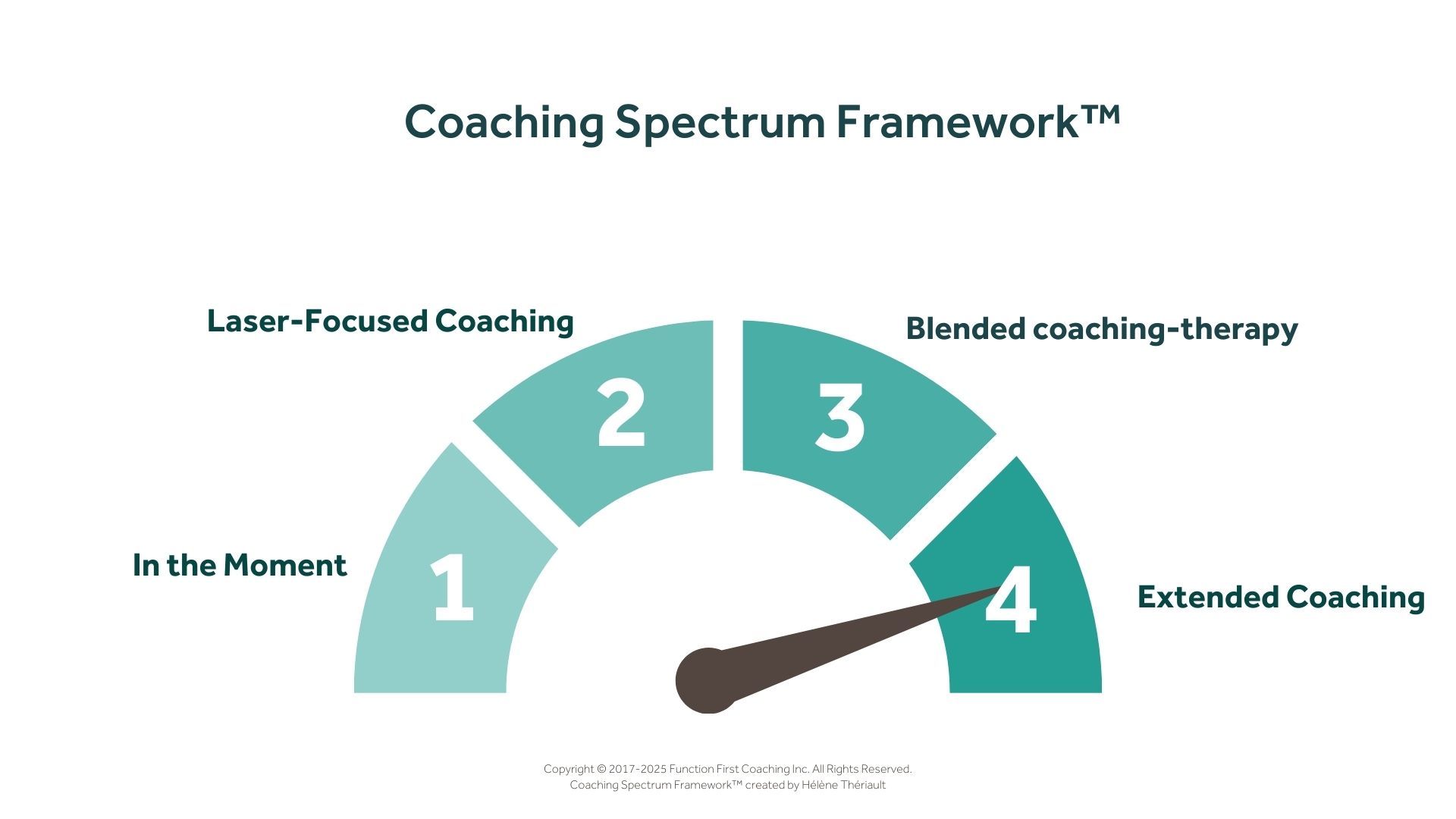Coaching is becoming an integral part of healthcare, helping clinicians enhance therapeutic alliances, foster patient engagement, and improve their health outcomes. While many healthcare professionals already use coaching techniques informally, understanding the
coaching spectrum framework™ provides a structured approach to adapting coaching to different clinical scenarios.
I developed the
coaching spectrum framework™ to help healthcare professionals integrate coaching competencies into their practice in a meaningful way. This framework was created as part of the accredited
Dive Into a Coach Approach® (DICA) certification training, allowing clinicians to apply coaching techniques
immediately after completing Level 1- Core Fundamentals.
As their learning deepens, they refine their coaching skills through Laser-Focused Coaching (Level 2-Relationship & Technical Mastery), Blended Therapy-Coaching, and Extended Coaching (Level 3- Live implementation). These approaches ensure that clinicians can confidently adapt coaching within their scope of practice while improving client interactions and outcomes.
Below, we explore four key coaching approaches within healthcare: In the Moment Coaching, Laser-Focused Coaching, Blended Therapy-Coaching, and Extended Coaching.

This approach occurs naturally in everyday clinical conversations. It is quick, responsive, and embedded into real-time interactions, often without the client recognizing that coaching techniques are being applied.
Key Features:
- Fast and seamlessly integrated into existing care interactions.
- Often more directive, leveraging observation and brief but impactful interventions.
- Encourages immediate insight and engagement.
Example: A physiotherapist working with a patient recovering from a concussion notices the patient expressing frustration about slow progress. Instead of immediately offering solutions, the therapist asks, "What has been working well in your recovery so far?" This reframes the conversation and helps the patient recognize their progress.
This approach is structured but brief (10-15 minutes). It explicitly acknowledges coaching while keeping it time-efficient, making it ideal for busy healthcare environments.
Key Features:
- Short, structured, and focused on a single topic.
- Helps clinicians guide patients through quick but meaningful self-reflection.
- Can be used within multidisciplinary teams to enhance patient-centered care.
Example: A nurse practitioner supporting a patient with chronic pain uses a Laser-Focused Coaching approach in a follow-up appointment. They ask, "If we focus on just one small change this week, what would be most helpful for you?" This encourages self-efficacy and collaboration in treatment planning.
In many healthcare settings, coaching is not a standalone intervention but is blended into therapeutic work. This approach acknowledges that healthcare professionals often use coaching techniques while also providing medical, rehabilitative, or psychological interventions.
Key Features:- Begins with a brief coaching conversation to clarify patient goals.
- Integrates coaching techniques into the clinical intervention phase.
- Concludes with reflection, reinforcing insights and patient ownership over their progress.
Example: An occupational therapist working with a client with ADHD starts a session by asking, "What feels most important for us to focus on today?" Before implementing executive function strategies, the therapist helps the client clarify their immediate priorities, ensuring the intervention aligns with their personal goals.
This is the most formal coaching approach in healthcare, where coaching sessions are scheduled over multiple weeks. This structure allows for deeper personal transformation and skill-building.
Key Features:
- 30-60 minute scheduled coaching sessions over a longer period (e.g., 6-8 weeks).
- Provides a structured space for patients to explore challenges and solutions in depth.
- Helps with long-term behavior change and goal achievement.
Example: A mental health professional working with a client experiencing burnout structures six coaching sessions around stress management and resilience-building strategies. Each session focuses on self-awareness, practical tools, and accountability, leading to sustainable change.
Understanding and utilizing the
coaching spectrum can help healthcare professionals:
- Strengthen therapeutic alliances, fostering greater trust and collaboration with patients.
- Improve patient satisfaction and engagement, leading to better adherence to treatment plans.
- Enhance interdisciplinary teamwork, creating more patient-centered care approaches.
For those looking to integrate coaching more intentionally into healthcare practice, exploring coaching models like
Dive Into a Coach Approach® (DICA) can provide further structure and guidance. Whether used informally or as part of structured coaching engagements, these approaches can significantly impact the quality of care.
Where do you see yourself on the coaching spectrum?
How might integrating coaching competencies help you enhance your clinical practice?
Ready to Dive in? Join Hélène Thériault for Dive Into A Coach Approach®!
Hélène Thériault, BScOT, MAdEd, MCC

